Average Driver Swingspeeds? COMPLETE GUIDE by Age, Handicap etc.
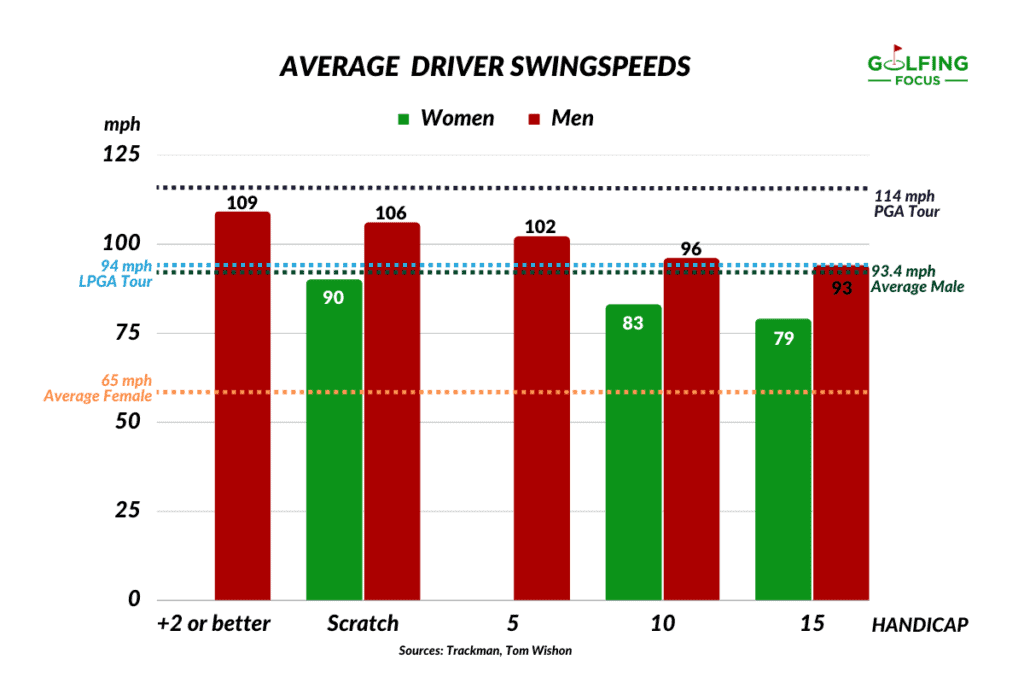
Jack Nicklaus didn’t have his swingspeed tested until 1998 by which time he was 58 years old and his record breaking 18 major winning career was well behind him.
But in modern golf it seems that swingspeed stats are almost as important to golfers as the actual yardages they drive the ball.
A higher swingspeed – or clubhead speed as it is also often called – will mean more distance the vast majority of the time especially off the tee and as such it is inevitable that golfers want to know how they stack up against their peers.
Over 95 mph is a ‘good’ driver swingspeed as it is above average for male amateurs according to Trackman. Clubhead speeds under 85mph are slow and put golfers within the lowest 17% of male amateurs while speeds over 100mph are fast enough to be ranked in the top 23%. A ‘good’ swingspeed for a woman amateur is over 70mph.
Comparisons across a category of golfers as wide as the entire population of male or female golfers is a starting point but a much better measure is how we are matching up against those closest to us in playing standard or peer group.
After all, it doesn’t make much sense for a beginner to be comparing their driver swingspeed to a scratch amateur or the numbers they see on the TV screen when watching the top pros smash the ball ever-increasing distances off the tee.
So in the remainder of this post we look at the topic of driver swingspeed in its entirety and do a deep dive into the numbers of how fast the average golfer should swing their driver broken down by a number of categories including handicap, age and gender.
And as an added bonus we’ll finally take a look at how this all stacks up against the best pros on the PGA and LPGA Tours!
[Top tip: Improving your fitness and swing speed will make a huge difference to how far you hit the ball and has the potential to add 20 to 30 yards to drives and an extra club throughout the bag. If you want to know how you can achieve this check out two of the best ‘golf training’ programs that can get you there:
- The Stack System
- Fit for Golf (Use discount code GOLFINGFOCUS20 for 20% off annual subscriptions!)
Average Driver Swingspeed by Handicap. Speed It Up to Get Lower!
When it comes to comparing golfers with each other the standard and simplest measure with which we are most familiar is of course handicap.
So when it comes to judging how your average driver swingspeed matches up with others seeing how the averages range across different handicap categories is a good and logical place to start.
As a whole lower handicap golfers have faster swingspeeds than higher handicappers. The average male 14.4 handicapped golfer has a driver swingspeed of 93.4mph according to Trackman while 10 handicappers driver speeds measure about 97mph. 5 and scratch players record 103mph and 106mph average speeds respectively.
A female amateur golfer by comparison has a slower driver swing speed and according to master club maker and industry leader in the research of golf club design Tom Wishon, the average driver swingspeed for women is around 65mph.
A scratch or better woman golfer meanwhile averages 90 mph; a 10-handicapper averages 83mph; and a 15-handicapper swings their driver at an average of 79mph.
Clubhead/swing speed is the key factor for determining a golfer’s potential distance and Trackman, arguably the leader in golf launch monitor technology, estimates that each 1mph increase can add between 2.5 and 3 yards of distance.
Their map below of the driver swingspeeds for amateurs with handicaps from +5 through to 15 also neatly illustrates the clear link between higher clubhead speeds and lower handicaps.
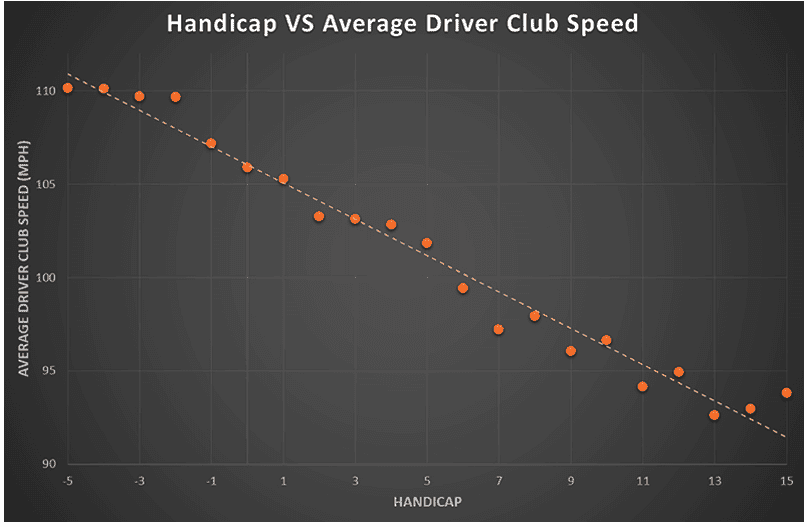
When you further note that the average swingspeed on the PGA Tour is higher yet again – 114.6mph over the course of the 2021-22 season, compared to the 110mph speed recorded by Trackman for +5 handicapped golfers here – the evidence for that link becomes yet more unarguable.
And why does swingspeed matter?
Put simply as a general rule increased swingspeed means more distance and the stats gurus are also crystal clear on the correlation between hitting the ball further and lower scores.
An extra 20 yards of driving distance is worth nearly 3 strokes to the typical 115-scoring golfer for example, 2.3 strokes to the 100-scoring player, 1.6 strokes to 90-scorers, 1.3 strokes to 80 scores, and 0.8 strokes to the pros.
What it is vital however that amateur golfers understand is that while the link between higher swingspeeds and lower handicaps (via increased distance) is obvious and clear they should not be pursuing ever-increasing clubhead speeds above all else.
For example, when you consider that the average swingspeed on the LPGA Tour is almost identical to that of the average male amateur (94mph vs 93.4mph) you may expect because of this that they will hit the ball similar distances.
But while the average man drives the ball around 219 yards typically the top pros in the women’s game average a total distance of 257 yards. That’s an enormous 38 yards extra with essentially the same driver swingspeed.
So increased distance is clearly not solely about increased swingspeed.
Therefore if you are really serious about hitting the ball further you will need to marry increased swingspeed with all the other elements that determine driver distance and you can find out what the key ones are in our in-depth look at this topic here.
Average Driver Clubhead Speed by Age. Maintenance is Key
Another interesting category to break down driver club/swingspeed is by age.
Looking at average driver swingspeeds by handicap is all very well but golfers often play most regularly with their age group peers and are therefore are frequently most concerned about how their driver clubhead speed matches up to others of a similar age.
As a whole 17 to 29 years old men have the highest median driver swingspeeds of close to 113mph according to a test of 600 golfers. 30 to 50-year-old median swingspeeds measure 103mph by comparison while 50 to 60-year-olds and the over-60s have mid-point swingspeeds of 98.9 and 93.3mph respectively.
This data is taken from Par4Success – a Golf Digest Top 50 Golf Fitness Trainer in the US – and their testing of over 600 junior, amateir and senior golfers over a 4 year period, and it is the best publicly available data when it comes to breaking down driver swingspeeds by age.
However the smallness of the sample size and the almost identical 113mph median swingspeed recorded for 17 to 29 years compared to PGA Tour pros – who average 114mph – suggests that these numbers are high and are not a perfect benchmark for those looking to compare their swingspeed with players of a similar age.
Further given that Par4Success used Flightscope launch monitor technology for their testing, which will typically give you a 3-4mph higher swingspeed measurement in comparison to Trackman, we would put forward the below estimated median swingspeeds for different age groups as potentially more realistic.
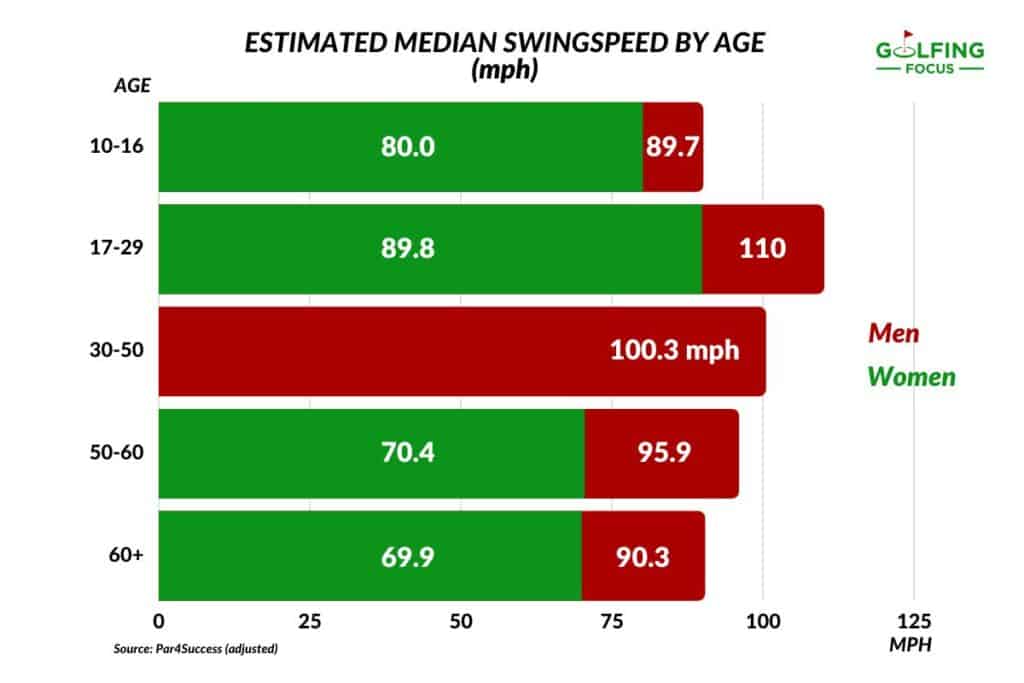
What is undoubtedly helpful though, and makes perfect sense when considered alongside Golfing Focus’ previous deep dive into the average driving distances across age groups from 20 all the way up to 70+, is that these numbers back up the assertion that golfers lose swingspeed and therefore distance as they age.
That the average golfer is statistically most likely to swing at their fastest up to the age of 29 correlates with the data collected from countless millions of golf shots by Arccos and Shotscope users that show 20 to 29 years olds average the highest driving distances.
The positive news also is that the decline in swingspeeds and distances is gradual and only starts to accelerate as players head over the 60-year age mark.
Further given the expanding availability of fitness/training programs and systems specifically targeted at helping golfers maintain swingspeed and therefore distance as they age there is a lot of help out there to ensure you keep up with your peers.
[Editor’s note – For those who are interested here are the entirely of the results from Par4Success’ clubhead speed study.]

Average Men and Women’s Driver Swingspeeds
Another category to analyze driver swingspeeds is simply by looking at the average speeds for both men and women.
While golf as we all know is a game of almost infinite variables, and each golfer’s swing is as unique to them as their own fingerprints, players often consider at a basic level how they compare against the ‘average’.
The average male amateur golfer has a driver swingspeed of 93.4mph according to Trackman that delivers an average total driving distance of between 219 and 226 yards. Titleist estimates women golfer swingspeeds are over 20% slower than men by comparison producing average driver clubhead speed of 65mph.
That the driver swingspeeds of female golfers are much less than men is of course not surprising simply because of the fact that with their comparatively less upper body power they tend to swing slower, especially on the downswing.
For all golfers however the opportunities to increase or at least maintain their swingspeed have never been more numerous and by increasing upper body and core strength, improving posture, or alternatively simply getting fitted for the correct clubs players can aim to increase the potential distance they can drive the ball.
Given the above averages can include everyone from the world-long driving champion to your grandparents however comparing yourself to the average of all men or women golfers is perhaps not the most useful.
For those regular golfers though who are interested in where they fit into the overall distribution of driver swingspeed across the amateur men’s game Trackman’s chart below will let you see where you fit.
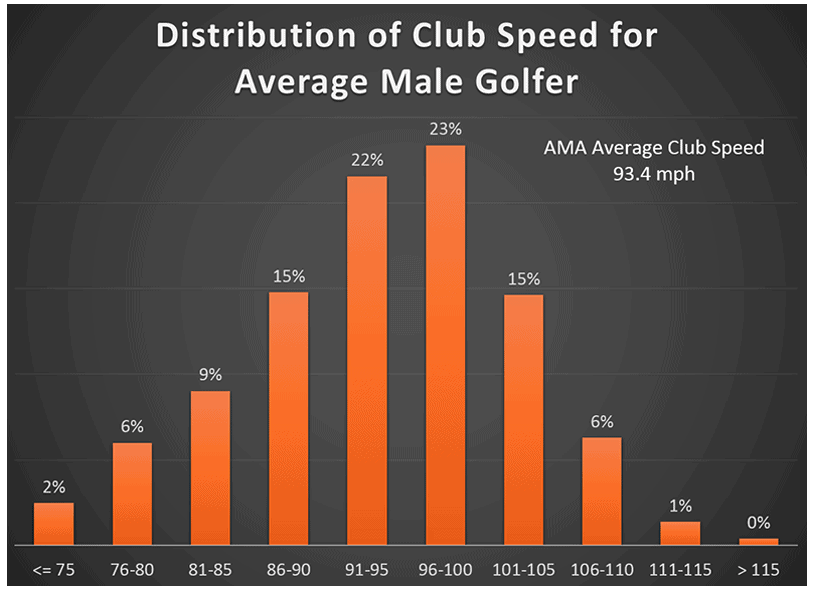
Average PGA and LPGA Tour Driver Clubhead Speeds
Although it is more often than not the best idea amateur golfers freqenrly can’t help but compare themselves with the pros.
And the same is true when it comes to the average swingspeeds on the PGA and LPGA Tours for the simple reason that the best players in the world are continually hitting the ball so far off the tee and regular players want to know what it would take to match them.
The average driver swingspeed on the PGA Tour is 115.13mph according to the latest Shotlink stats. This is 2.76mph more than the average in 2007 when Shotlink began to track this metric and the average swingspeed has risen in 11 out of the last 15 PGA Tour seasons. The average driver swingspeed on the PGA Tour is 94mph.
What these numbers clearly show is that the best pros in the world have been focusing on increasing their driver swingspeed consistently over the years and the straight forward reason behind this is that more swingspeed is a gateway to let them drive the ball further.
And more distance means lower scores.
Unlike us regular amateurs the top pros are consistently striking the ball near the sweet spot of their driver and therefore are experts at maximising the transfer of the swingspeed they generate into ball speed which is the single biggest determing factor in the distance a golf ball actually carries.
PGA Tour players are therefore well aware that whatever work they do to increase their driver swingspeed will pay dividends and as a result in the modern game you are as likely to find them in the gym or using speed training programs, with a focus on generating more clubhead speed, as you are on the range.

A quick search of the Internet also and you will consistently see the baseline 114mph average PGA Tour driver swingspeed cited.
But so dedicated are pros now to increasing their driver swingspeed you need only look at the change in the number of them averaging a speed of more than 114.0 mph over the last decade or so.
While only 38% the players on Tour in 2010 averaged more than 114.0mph nearly 60% of them average that over that speed today and while distance continues to be such a big factor in the modern game this trend is likely to continue.
Further when you look at the average driver clubhead speeeds below of some of the very best PGA and LPGA Tour pros today – including Rory McIlroy, Jon Rahm, Nelly Korda and veterans such as Adam Scott – it is no suprise that they are well above that 114mph baseline mark!
| PLAYER | AVERAGE DRIVER SWINGSPEED |
| Rory McIlroy | 122.47 mph |
| Scottie Scheffler | 120.43 mph |
| Adam Scott | 120.32 mph |
| Jon Rahm | 120.18 mph |
| Xander Schauffele | 119.88 mph |
| Jason Day | 118.97 mph |
| Jordan Speith | 116.91 mph |
| Nelly Korda | 103.1mph |
[Note – Just so you know, and we are upfront as an affiliate program participant, Golfing Focus, at no cost to you, earns from qualifying purchases made through links on this page.]
Other top articles related to this topic:
- How Far Should Your Driver Swingspeed Go? 60 to 120 mph Guide
- How Far Should You Hit a Driver? FULL GUIDE By Age, Handicap etc.
- How Far Should Your Ball Speed Go? 100mph All the Way to 210mph!
- What Should Your Driver Attack Angle Be? Try Not to Be Negative
- Why Don’t Your Drives Go Far? Slow and Steady Loses the Race
- Where is the Sweet Spot on the Driver Face? Take the High Road
- Should Beginners & High Handicappers Use a Driver? Yes & Yes
- What Determines Driver Distance? Skill Triumphs Over All!
- Do Distance Golf Balls Go Further? Marketing Matters
- Do All Golf Balls Go the Same Distance? Physics First
- What Affects Golf Ball Distance? Beware ALL the Uncontrollables!
- Are Driving Range Distances Accurate? Golf Balls are a Problem
- How Do Pros Hit the Ball So Far? It’s Not About the Equipment!
- How Often Do Pros Hit Driver? Not As Much As You Think!
- How Far Do Pro Golfers Hit Each Club?
- The PGA Tour’s Rising Driver Ball Speeds Mean One Thing – $$
- What Driver is Most Used On the PGA Tour? Top 100 Player Analysis
- What Shafts Do Pros Use? Top 100 PGA Tour Player Breakdown
- Most Popular Driver on LPGA Tour? Top 50 Player Guide
RECENT ARTICLES
LEGAL INFORMATION
This site is owned and operated by Golfing Focus Limited, a private limited company whose registered office is in London, UK. Golfing Focus Limited is a participant in the Amazon Services LLC Associates Program, an affiliate advertising program designed to provide a means for sites to earn advertising fees (at no cost to you) by linking to Amazon.com. Golfing Focus Limited also participates in other affiliate programs with the eBay Partner Network, FlexOffers, CJ.com, Svorn and other sites and is compensated for referring traffic and business to these companies (again at no cost to you).
Our Socials

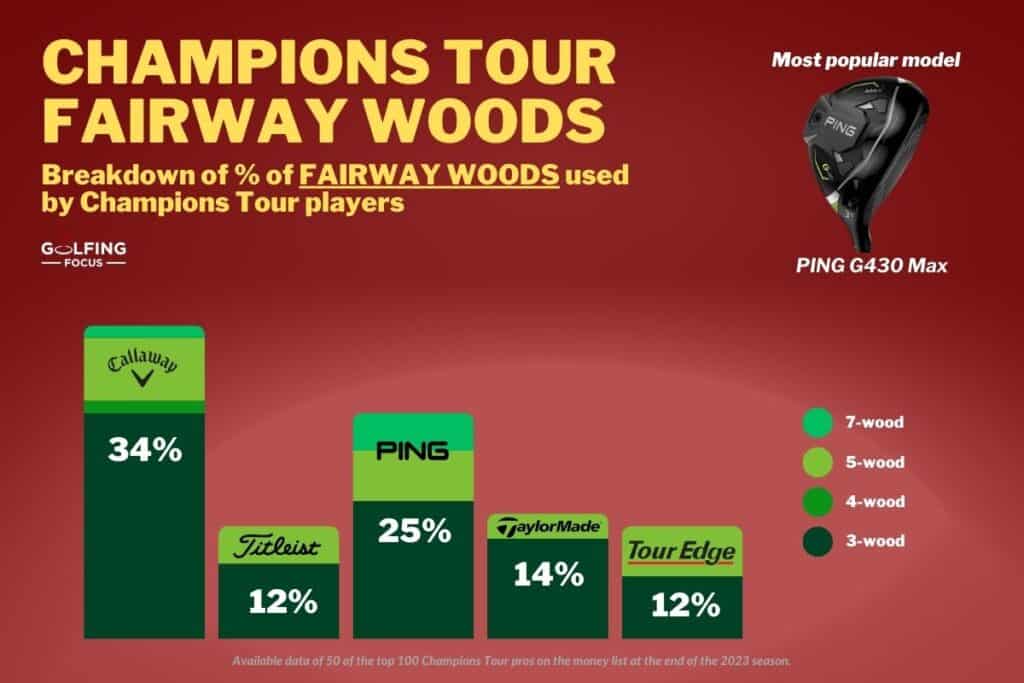
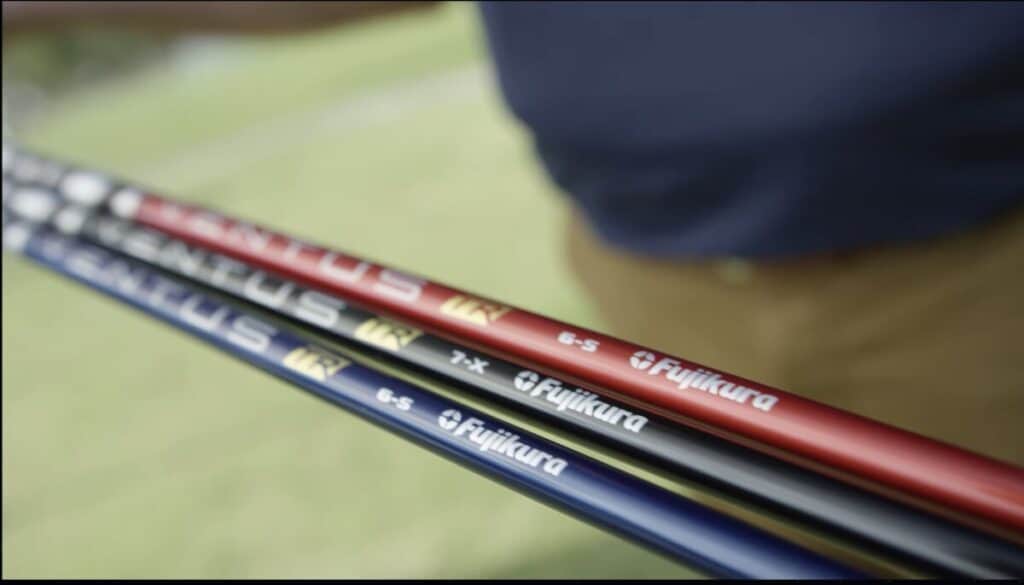
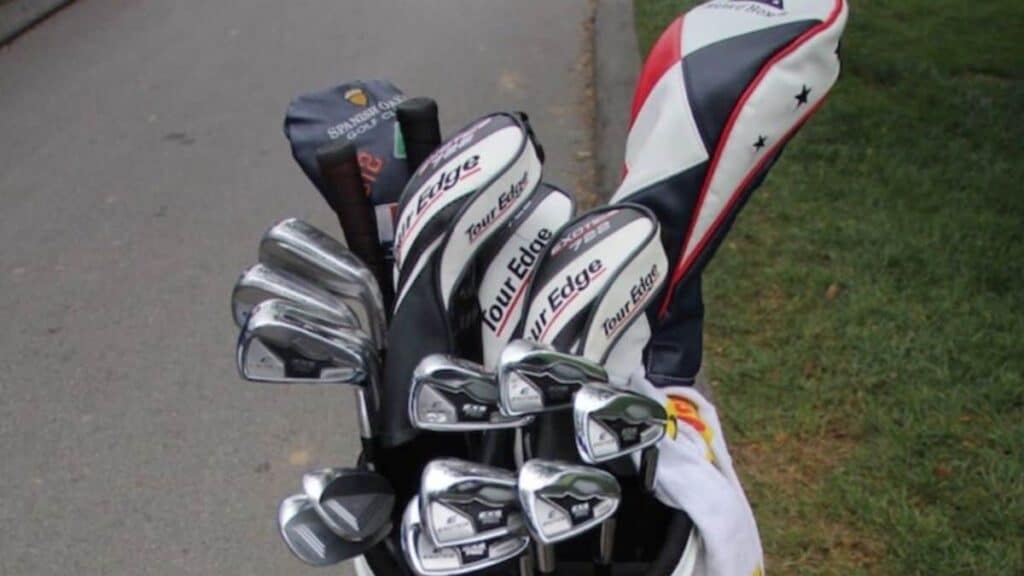
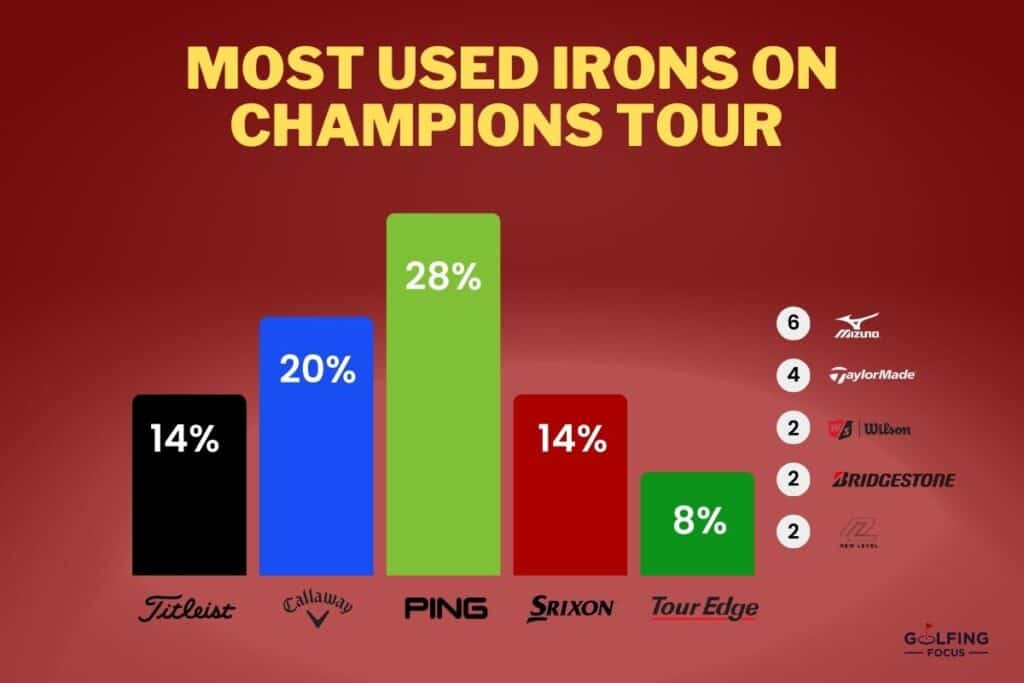
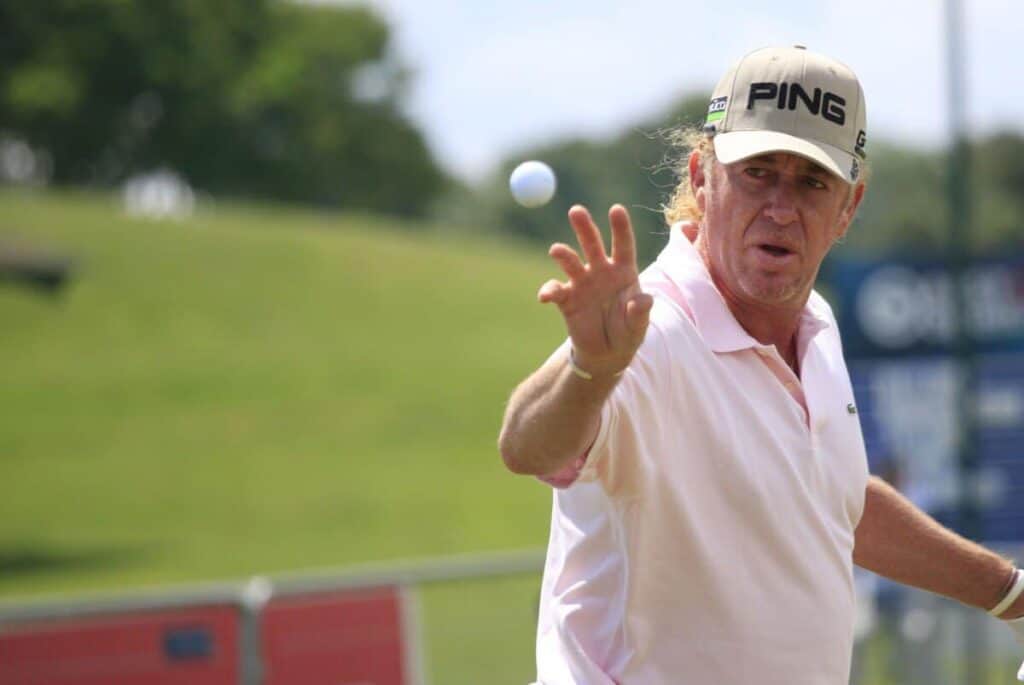
Leave a Reply